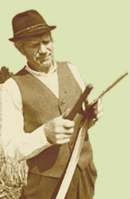Birds of the year: Plovers, tiny waders
Hannes Pehlak describes the ways of life of plovers in Estonia and elsewhere. In Estonia there are two species of plovers, and the author gives some guidance to differentiate between the species. These waders are clearly related to water: the common ringed plover inhabits marine coastal areas, and a few inland quarries; the little ringed plover inhabits waterbodies all over the territory of the country. In 2010 the waders working group of the Estonian Ornithological Society started thorough research on nesting biology and migration of the little ringed plover.
Topping as crime against trees
Veiko Belials starts a discussion over topping as a questionable horticultural practice, initiated by a photo of a topped tree in our February issue. He states that topping brings trees to slow death and such practice should be forbidden.
Topping and the Tudu case
Aino Aaspõllu does not agree with the previous author: topping is as good as any other horticultural practice. She brings several examples of successful practices, illustrated with photos of topped trees and shares some light on the case of the topped white poplar in Tudu.
Urban and park trees should be assessed and tended by arborists
Sulev Järve sums up the discussion by stating that trees should be tended by specialists and tending should be consistent. However, trees are often not tended at all until its too late to do something gentle. It is quite clear that urban and park trees should be tended with care from the early age, to avoid later topping, which always causes major damages to alive trees.
Mires hide history
Tõnno Jonuks and Ester Oras introduce a bog body from Estonia, as well as other interesting archeological finds from mires and call people working in mires to be attentive about potential findings. In general, findings from bogs are quite rare, as people dont use these areas very much. Most of the findings have been found by workers digging peat. In Estonia, there are several finds of weapons and jewelry, including one set of golden clips.
Estonian Nature enquires
Ann Marvet recalls the role of Eesti Loodus in Phosphate War 25 years ago
Kaili Viilma and Malle Oras explain why the visitors center of the Endla nature protection area is closed and why hiking trails are in such a poor shape.
Tree of the year: Apple tree in folk tradition
Marju Kõivupuu looks at the rich tradition related to apple trees in Estonia and elsewhere. In folk traditions of many nations, an apple tree symbolizes a female person: a maiden, a woman and a mother. It also symbolizes love and fertility. The author also looks back at history: how apple trees became domesticated in Estonia and how people became used to the new species.
Interview: Painting can be studied only in Tartu or Paris
Toomas Kukk has interviewed Heldur Viires, a painter.
Phosphate mining through the perspective of local people
Sven Valler complements the topic of phosphate mining started in the previous issue with the opinion of the local people of the Rägavere rural municipality. The author points out that the majority of criteria look at the economic feasibility, while assessment of environmental impacts has been overlooked. It seems that there are also a number of misinterpretations about the size of the phosphate fields, the settlement density and soil quality of the area.
Sorrel leaves: to eat or not to eat
Urmas Kokassaar estimates the pros and cons of eating the leaves of common sorrel. The plant's sharp taste is due to oxalic acid, which is a poison. In small quantities sorrel is harmless; in large quantities it can be fatal, but in reality no-one can eat that much. In Estonia the leaves are usually puréed in soups or added to salads.
Starfish in meteorite craters or thoughts on everyday work of a paleontologist
Oive Tinn takes a glance at tiny fossils, which on the first sight are difficult to be associated with starfish as we know them today. After death the starfish specimens decay very fast, leaving only fragments the size of sand grains. However, experienced paleontologists can still recognize the remnants of starfish. The territory of the former Baltic continent is not rich in starfish skeletons, so every finding is an excitement.
Wetland restoration in Estonia
Marko Kohv and Jüri-Ott Salm expand upon the definition of wetland and the distribution of mires in Estonia. Moreover, they look into possibilities to restore former wetlands destroyed by drainage. In Estonia, about 5.5% of the territory is covered with mires, but in about 70 years the territory has decreased by 2.7 times. Even though wetland restoration is very expensive, mires are being restored in Estonia and in our neighboring countries. In near future a number of mires are going to be restored in our protected areas, such as Soomaa and Lahemaa national parks.
|


![[IN ENGLISH]](images/gb.gif)






